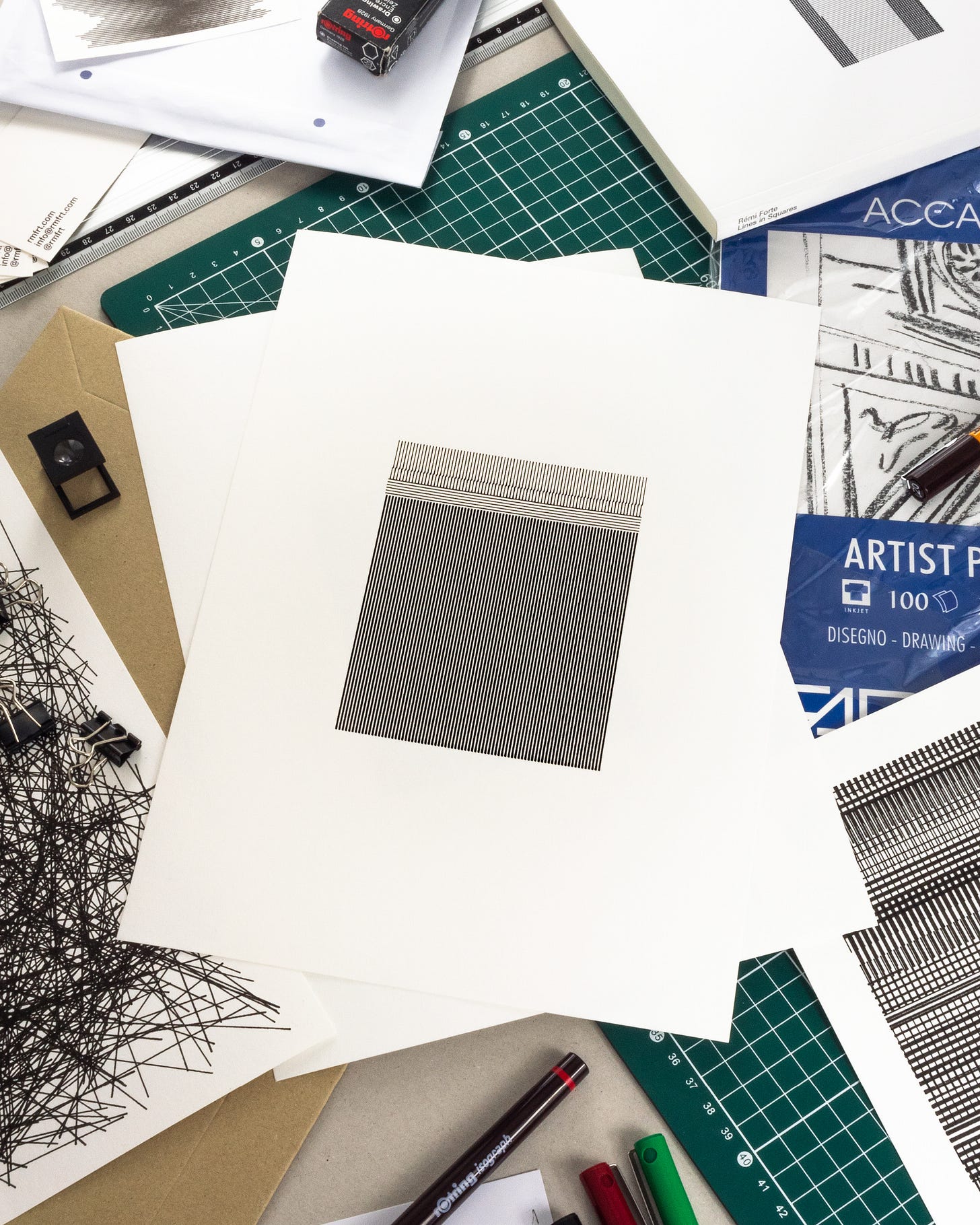
In my research-creation practice, I’ve stayed true to a principle for several years, an idea I’ve always kept in mind: to develop a radical approach (or at least I try to move in this direction). I keep telling myself that “I have to be radical”. Do I achieve this radicality? Am I still too shy? Or am I going too far? I don’t know (you tell me). But I’m constantly thinking about this radical approach.
My works tend towards simplicity. I use as few elements as possible. I remove extra details; I constrain the parameters of my generative systems; I eliminate the non-essentials. And I apply this without exception: the slightest concession gives me anxiety, and compromises make me uncomfortable. This working process takes me through many existential questions. I argue internally about the need for this or that element: “This line, this letter, should I get rid of it?” I trim up the pieces until right before the breakpoint. Reaching that point is always an event, a revelation: I feel balance and peacefulness.
A quest for purity or perfection does not drive me. I’m not aiming for any essentialism (things like that frighten me, paralyse me). I’m looking for a modest simplicity, as fragile as it is sincere. I need to get rid of anything that disturbs my concentration or parasitises my mind. I can’t stand the noise produced by elements whose presence seems unjustified. I need to create works that restrain external stimuli, a capsule which offers me respite, both when I make them and when I look at them. My radical approach is not a posture but a necessity—it’s not minimalism to look trendy. Honestly, it would be hard for me to do things any other way.
Check out my “Repeated Lines” series, featuring artworks generated using a Python script and drawn using a pen plotter AxiDraw A3/V3 on Fabriano 200 g/m² paper with a Rotring Isograph 0.3 mm pen. You can find these drawings on my online shop.

